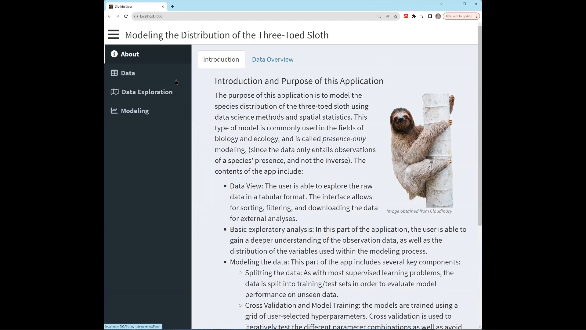Applied Statistics and Data Management Student Interview: Benton Tripp

We caught up with Benton Tripp, a current student in the Applied Statistics and Data Management (ASDM) graduate certificate program. We asked him about his interest in studying statistics, his experience with the program, and how it has helped his career.
Benton’s interest in mathematics is deep-rooted and long standing. During his time as an undergraduate mechanical engineering student at Utah State University, Benton took an Introduction to Python Course, which helped him realize the far reaching practical applications of math and statistics. This revelation led Benton to change his major to Applied Mathematics and pursue a minor in Computer Science.
Due to COVID-19, Benton finished his Data Analytics degree online through Western Governors University, and began work as a data analyst, gaining experience in the field that led him to focus on spatial statistics and spatial data science. Benton was drawn to NCSU due to its graduate geospatial information science program, but recognized that this program would not cover everything he wanted to learn on the topic. The ASDM Certificate program filled in those knowledge gaps, in addition to offering highly valued data science credentials and complementing Benton’s primary graduate degree.
As a new entry to the field of data science and analytics, Benton had not received much formal training with many of the tools and concepts he uses in his day to day work. Despite this, Benton was apprehensive about returning to school, as the value of that education can often feel less valuable than hands-on, real world experience. While he has felt the benefits of 3 years of data science experience, he credited courses like ST 555 (a SAS based course) and ST 558 (an R based course) helped him solidify his skills in programming and data analysis. Benton expected to learn new skills with the SAS language to add to his already solid understanding of R and Python, but was surprised with how much additional R knowledge ST 558 provided him.
The thing Benton stated he liked most about the program was the focus on application of data analytics, not just abstract mathematical concepts and proofs. While those foundational concepts are valuable to data analysts, Benton pointed to the challenges of fully delving into those concepts on a granular level for a constrained, non-degree program. He found the programs focus on establishing an understanding of the fundamentals and then quickly showing how these programmatic methods can be used to solve real world problems both practical and effective.

One of the hands-on learning experiences Benton had was the creation of an R shiny app to monitor the species distribution of three-toed sloth. This multi-view data analysis tool, known as a “presence-only model” allows users to see in-depth visualizations of complex data in an intuitive format. While Benton’s model was focused on sloths, it has wide applications and is a type of data visualization widely used in biology and ecology. Amazing tools like this are only one of the many practical ways students can apply what they learn in the ASDM courses.
Benton highly recommended the ASDM program to others, especially those who, like him, are already studying or working in the field of data science and have existing experience. He found the course is excellent as a supplement to round out a data scientist’s skills in statistics and data analysis. Specifically, Benton was impressed with the course structures and the performance of the instructors. Professors such as Jonathan Duggins, Jason Osborne, and Justin Post made the learning experience accessible and enjoyable. Despite being apprehensive about taking advanced mathematics courses through distance learning, Benton found the ease of access to help from instructors and teaching assistants, along with the clarity of the coursework helped the program to be a high-quality learning experience.
- Categories: